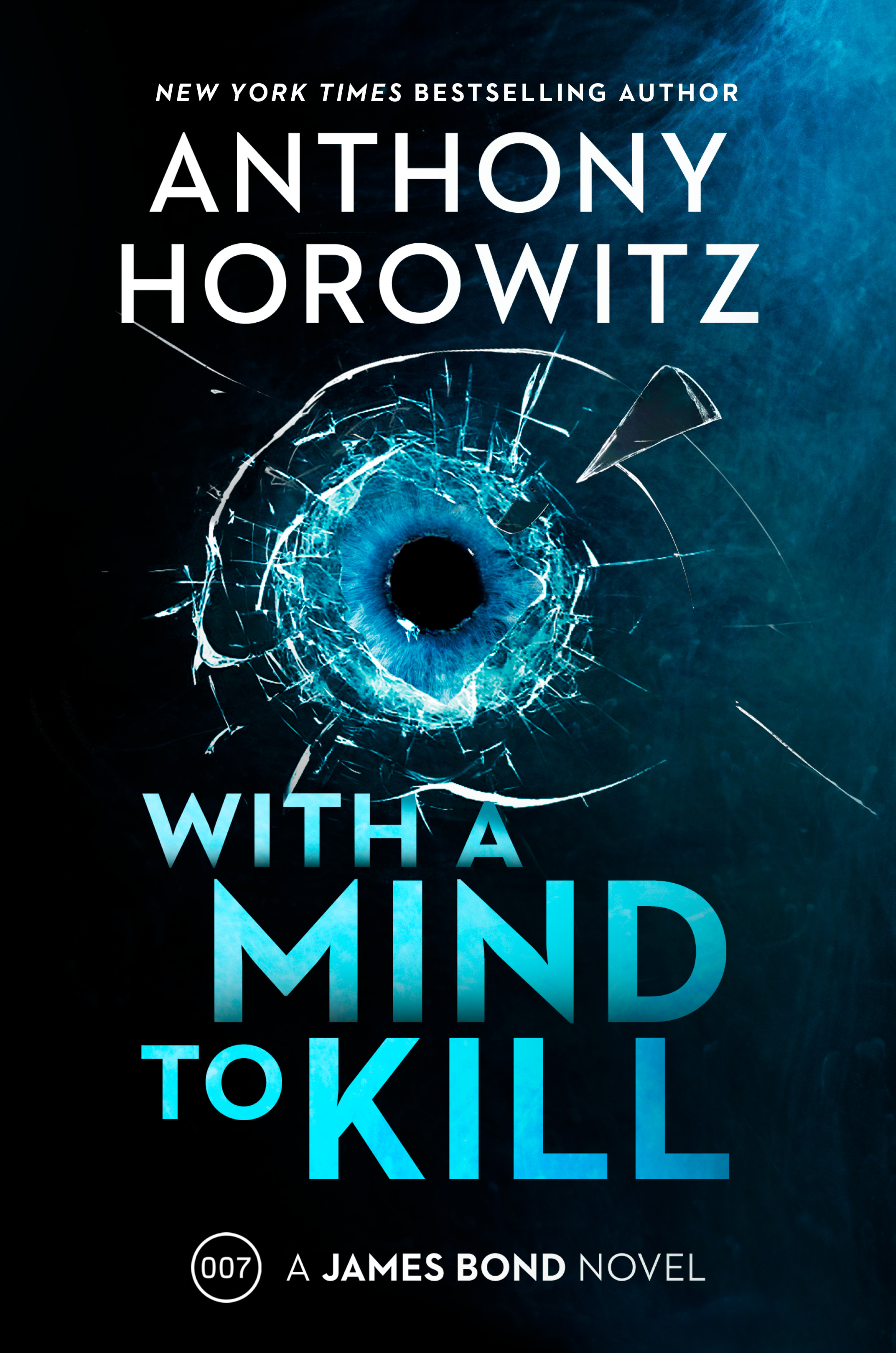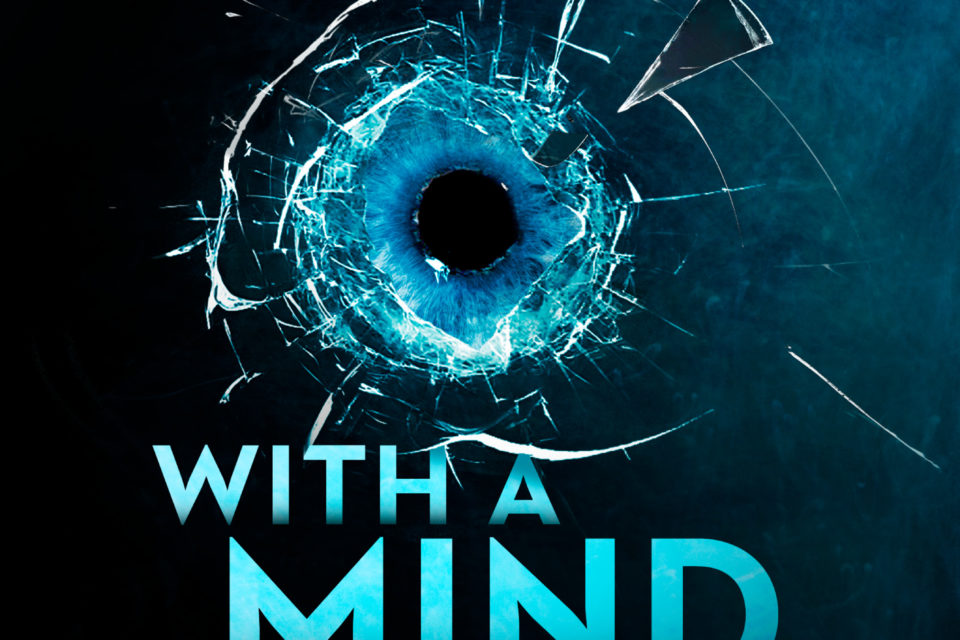Bond needed death, or the threat of death, as a constant companion. For him, it was the only way to live.
Bond fans will find irony in this nicely-composed turn of phrase in Anthony Horowitz’s latest James Bond continuation novel, With a Mind to Kill, coming just seven months after Bond was killed in his latest cinematic outing, “No Time to Die.”
The new book (HarperCollins’ Harper imprint in US May 24, 2022; Penguin’s Jonathan Cape in UK) also has a connection to current world events as it is based largely in Russia (Moscow and Leningrad), with Bond taking on power-hungry Communist leaders in the Kremlin. But it is set in 1964, the same year Ian Fleming died, and begins just days after the conclusion of the last novel Fleming was working on when he died, The Man with the Golden Gun, which was completed and published the following year in 1965.
He had lost the comfort of certainty.
With a Mind to Kill is the first new Bond continuation novel commissioned by Ian Fleming Publications in four years, and it is the third and apparently final one by Horowtiz, based on his comment in the Acknowledgments: “This book completes my James Bond trilogy…”. Horowitz (Magpie Murders and the Young Reader series Alex Rider) is the seventh post-Fleming author of the 27 original novels about 007. Horowtiz has demonstrated the ability to create the best and most exciting Bond novels since Fleming. He came out strong in 2015 with the dynamic Trigger Mortis, not only the best-written and most Fleming-like of all the successor novels but even better than a couple of Fleming’s weakest entries. It took place on a timeline amidst Fleming’s series – immediately after the end of Goldfinger – and deftly incorporated previously unpublished Fleming writings and chapter titles. Horowitz’s 2018 follow-up, Forever and a Day, was a strong successor and also very popular among Bond book fans as it was an origin story that took place prior to Fleming’s first Bond novel, Casino Royale. Neither concept had been attempted by any of the other six authors (some of whom get direction from Ian Fleming Publications).
He felt the nose break and saw the curtain of blood come down.
(continue reading below…)

Now, Horowitz has taken on the territory tried by three of his predecessors, picking up Bond’s story right from where Fleming left him in the 1960s. That proves to be more problematic here. Horowitz’s immediate predecessor, William Boyd, resumed Bond’s saga almost six years later in 1969 with his 2013 novel Solo, with Bond at age 45 and on a mission in Africa. Boyd employed a very different writing style and carried through a very limited number of references to familiar characters and tropes from Fleming’s Bond universe, even dumping Bond’s beloved housekeeper May. As with all but three of of the continuation authors, Solo was the lone outing for Boyd. Sebastian Faulks’ single entry in 2008, Devil May Care, took place 18-months after The Man with the Golden Gun and he wrote as if he were Fleming, maintaining several key characters and Bond traits. That book broke sales records. The first to follow Fleming was Kingsley Amis in his 1968 Colonel Sun, which took place some months after Fleming’s last outing for Bond. It had few of the familiar characters, no clever Bond girl names, no notable special gadgets or cars, and no chases or notable action scenes. It was the first and last attempt to keep Bond alive in novels for 13 years until the 1980s.
Horowitz tries a little of all of the above, and more – With a Mind to Kill is infused with references to nearly three dozen characters from Fleming’s Bond universe – none in any especially notable or memorable way, as well as some references to things from his own two previous Bond stories and even some prominent real-life characters. There are no gadgets and Bond doesn’t drive a cool car — those were mostly a creation of the cinematic version of 007; there’s only a single brief mention of a Walther PPK and it isn’t even being used by Bond (nor a Baretta; he has no special weapons here).
This novel picks up just days into Bond’s recuperation from his Golden Gun mission to take out Scaramanga, which readers may recall was an assignment for Bond to prove his loyalty to MI6 after spending months being brainwashed in Russia to the point that he tried to assassinate M at nearly point-blank range in M’s office. Horowtiz proposes that Bond is not only called back quickly following the Golden Gun mission in Jamaica to immediately start the next assignment, but that this new assignment intentionally sets him up for more tortuous brainwashing in Russia.
With a Mind to Kill twists itself into pretzels rationalizing the plausibility of this happening again to Bond only months after the first time, and then justifying the faked death of yet another prominent member of MI6 only months after they faked Bond’s death.
(Not only do we get more faked deaths, Horowitz also gives us a Luke/Darth Vader revelation of a relationship between two key characters and a Sonny Corleone-style gunning down of a pivotal player in a busy public place.)
Continue reading below…

(c) Anna Lythgoe; From Harper
All the references to previous Bond characters, missions, locations, and even descriptions from a non-Bond book by Fleming, consume a chunk of the 259 pages (by far the shortest of the three from Horowitz), and sometimes feel like excessive homage. One of the resurrections is the Russian organization of three Red Army counter-intelligence agencies called SMERSH from Fleming’s early Bond novels before it was replaced by the independent terrorist and extortion entity called SPECTRE. Interestingly, Horowitz changes the presentation of the name to upper-and-lower-case here as Spectre. That agency serves as a springboard for a new one called Stalnaya Ruka, also operating amongst leaders in the Kremlin, but secretly, we later learn.
It is this new successor agency that stages a kidnapping of Bond, the biggest set piece of the novel. It’s a dramatic attack in broad daylight on a van carrying Bond to jail (part of the ruse by MI6) as it crosses the Tower Bridge in London. The van is quickly engulfed in white smoke as the assailants drop Bond down to high-speed turbocraft jet speedboats that appear out of nowhere on the Thames river to whisk him away amidst a hail of bullets while outrunning and out-maneuvering police boats.
It’s only after all this, more than a third of the way into the book, that the requisite Bond woman is introduced. She does not have a suggestive or even a cutesy name – Katya Leonova — and is not the traditionally physically voluptuous woman of Fleming’s stories. A short while later we get 11 pages of her pouring out her long sad story to Bond as he gets her drunk over dinner in public. Her melancholy continues for five more pages of pillow talk the next morning at their hotel.
(Continue reading below…)

With a Mind to Kill is divided into three parts, and offers what is becoming rarer these days, chapters, and chapters that each have a number and a name.
Horowtiz once again demonstrates his ability to craft a clever turn of phrase and compose metaphors to create a visual image, which is always so satisfying for the reader.
…a pair of surgical lamps, leaning forward as if they were trying to eavesdrop…
Horowitz does somewhat emulate Fleming’s storytelling structure and style. After the opening, the story drops back in time a few days to explain what preceded those events. And Horowitz’s Bond makes the same kind of multiple misjudgments and strategic mistakes that jeopardize the mission and nearly prove fatal, which Bond only realizes and regrets after he’s made them and survives by sheer luck or by the intervention of others, just as did Fleming’s Bond. In addition, Bond once again has some self-reflective moments and considers resigning from the service, a common occurrence in Fleming’s stories.
And like a couple of Fleming’s novels, With a Mind to Kill leaves readers uncertain about Bond’s future career and whether or not he will even survive to figure it out.
— By Scott Hettrick

I was not initially impressed with either Trigger Mortis nor Forever And A Day, but found With A Mind To Kill grabbed me quickly. It kind of dags in the middle and lacks the exciting endings of the previous two novels, but at least we are given something different to what a Bond author has given us before.